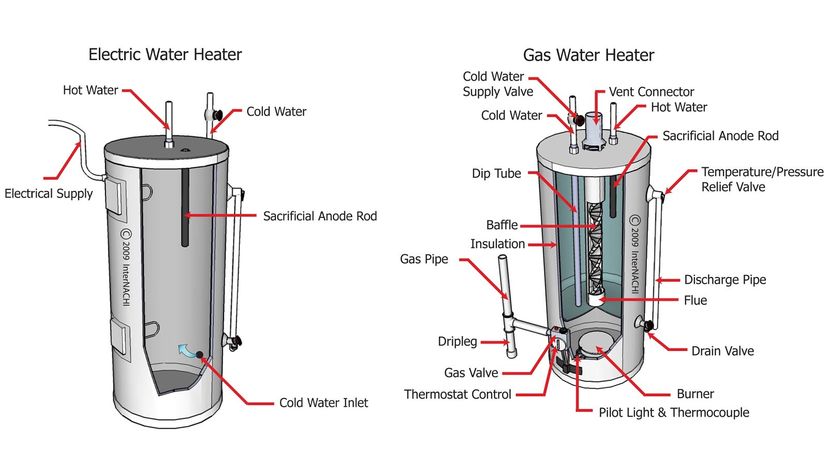
When your hot water suddenly turns cold, understanding the inner workings of your water heater can be incredibly useful. It might seem daunting, but breaking down the system into its core components makes it much easier to grasp. This guide will walk you through the key water heater parts, their functions, and when you might need to consider replacements.
Key Components of a Water Heater
Water heaters, whether electric or gas, rely on a set of critical parts to function correctly. Here's a look at some of the most important ones:
1. Thermostat
The thermostat is the brain of your water heater. It regulates the water temperature, ensuring it stays at your desired setting. In electric water heaters, there are usually two thermostats, an upper and a lower, working in tandem. In gas water heaters, a single thermostat controls the gas valve. A faulty thermostat can lead to inconsistent water temperatures or even a complete lack of hot water.
2. Heating Element (Electric Water Heaters)
In electric water heaters, heating elements are responsible for heating the water. These elements, typically made of metal, convert electrical energy into heat. Over time, these elements can burn out or become coated with mineral deposits, reducing their efficiency. If your water isn't heating up properly, a faulty heating element is a likely culprit.
3. Burner Assembly (Gas Water Heaters)

For gas water heaters, the burner assembly is crucial. It consists of the burner and the gas valve, which work together to ignite and maintain the flame that heats the water. A malfunctioning burner assembly can lead to pilot light issues or inconsistent heating.
4. Anode Rod
The anode rod is a sacrificial component designed to protect the water heater tank from corrosion. It's typically made of aluminum or magnesium and attracts corrosive elements, preventing them from damaging the tank. Over time, the anode rod will corrode and need replacement. Regularly checking and replacing the anode rod can significantly extend the life of your water heater.
5. Temperature and Pressure Relief (T&P) Valve
The T&P valve is a safety device that releases excess pressure or temperature from the tank. This prevents the tank from bursting, which is a serious safety hazard. If the T&P valve is leaking or malfunctioning, it needs immediate attention.
6. Dip Tube
The dip tube carries cold water to the bottom of the tank, ensuring it's heated efficiently. A broken dip tube can result in lukewarm water or inconsistent temperatures.
7. Drain Valve

The drain valve allows you to drain the water heater tank for maintenance or to remove sediment buildup. Regular draining can improve the efficiency and lifespan of your water heater.
When to Replace Water Heater Parts
Knowing when to replace water heater parts is essential for maintaining a functional and efficient system. Here are some signs that a part might need replacing:
- Inconsistent water temperature: This could indicate a faulty thermostat or heating element/burner assembly.
- Rusty or discolored water: This might suggest a corroded anode rod or tank.
- Leaks: Leaks around the tank or valve could indicate a faulty T&P valve or drain valve.
- No hot water: This could be due to a faulty heating element, burner assembly, or thermostat.
- Strange noises: Rumbling or popping noises might indicate sediment buildup or a failing heating element.

Maintaining Your Water Heater
Regular maintenance can significantly extend the lifespan of your water heater. Here are some tips:
- Flush the tank annually: This removes sediment buildup.
- Check the anode rod regularly: Replace it as needed.
- Test the T&P valve: Ensure it's functioning correctly.
- Inspect the heating elements/burner assembly: Look for signs of wear or damage.
Understanding the various water heater parts and their functions empowers you to maintain your system effectively. Regular checks and timely replacements can prevent costly repairs and ensure a consistent supply of hot water. By knowing what to look for, you can keep your water heater running smoothly for years to come.
No comments:
Post a Comment
Note: Only a member of this blog may post a comment.